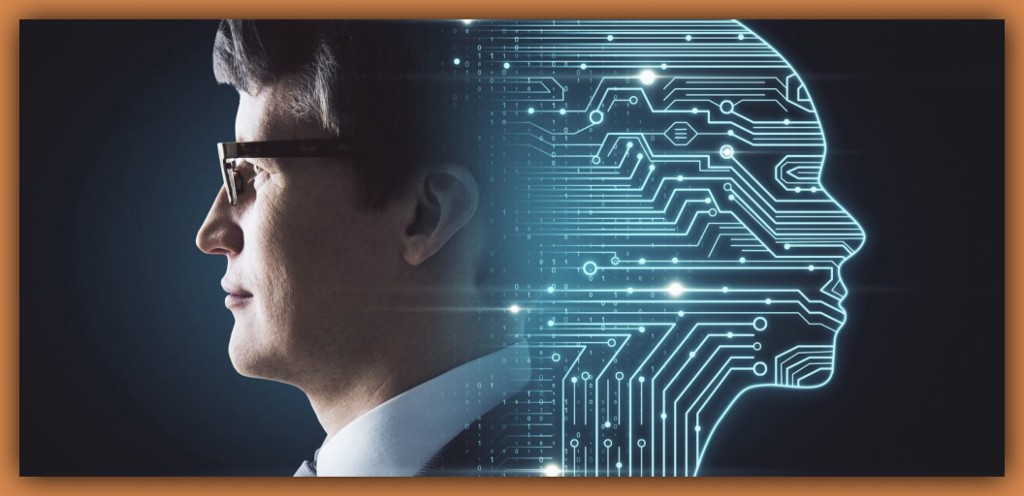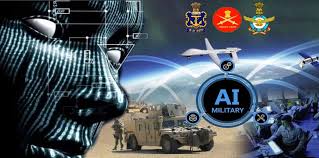Artificial intelligence (AI) seeks to make machines perform tasks that are usually done by humans requiring human intelligence and discernment. It uses data and makes decisions which in the normal course would require human level of expertise.

Basic functionality based Artificial intelligence is what is used in ‘Reactive machines’ like simple robots which cannot create memories or use past information to influence future decisions. They can only react to present situations. IBM’s Deep Blue chess playing computer which beat Gary Kasparov is a typical example. The next level of functionality based AI application is the ‘limited memory AI’ which uses previous data and keeps adding it to its memory. Self-driving cars is an example of this. Initial autonomous vehicles were without limited memory and so took far longer to react and make decisions. Future development in the functionality dimension of AI is expected to make inroads into understanding human mind and human emotions and make machines mimic such complex features of human behaviour.
When it comes to AI systems based on capabilities, at the first level we have what is known as Artificial Narrow Intelligence (ANI), also referred to as weak AI. Narrow AI is designed to perform a well defined, single domain task. Speech and language recognition by Siri and Alexa, vision recognition features of self-driving cars, robotic vacuum home cleaners and marketing engines which suggest products based on our personal purchase history are examples of this. These systems can be taught to improve their performance with respect to the specific tasks for which they are designed. Unlike such single domain capability of the artificial narrow intelligence, the human intelligence spans multiple domains and multiple contexts simultaneously. Such a capability in a machine to span multiple domains and contexts like the humans is referred to as ‘Artificial General Intelligence’. Although we are still a long way from achieving this capability, research is headed towards developing Artificial General Intelligence to give machines the capability to learn, understand and perform broader, multifarious tasks matching the human capability. Beyond that, the endeavour would be to to outperform humans through ’Artificial super intelligence’.

AI has intruded into the daily life of ordinary citizens of even developing and low income countries. From banking to health care, travel, government schemes, education, communication, agriculture and even in low-end retail purchases and payments, AI has impacted our lives already, mostly in a very positive way. Through unobtrusive intrusion using AI, every industry is trying to become more efficient, competitive and provide customised personalised services to their clients. Whether from the perspective of individuals, the society, organisations, corporate entities or even national governments, the impact of AI is enormous and all pervasive.
‘Virtual Reality’ (VR) systems enable us today to substitute a synthetic environment for a real one. ’Augmented reality’ (AR) goes even beyond and enriches the actual physical environment with superimposed virtual objects which gives us a sense of presence, an actual feeling of being there. Together, they are set to transform entertainment, medicine, education, weapon systems, tourism, real estate, manufacturing, logistics, warehousing etc. Rajiv Malhotra in his book titled ‘Artificial Intelligence and the Future of Power’ explains that VR technology would allow a surgeon to superimpose details and images from scans directly over their patients body. ‘Augmented Reality’ makes it possible for us to enjoy a meal and a conversation with a person as if he was sitting next to us, even if he may physically be across the globe. Watching sports events will become exhilarating. One would be able to remotely experience climbing Mount Everest, canoeing down the Victoria falls or deep sea diving. AI offers unimaginable possibilities in improving the lives of global citizens.

On the other end of the spectrum is the potential for weaponisation of AI and its military use. Selection of targets and weapon systems, control centres, autonomous weapon systems like swarm drones, surveillance, intelligence gathering, disruption and manipulation of defence cyber networks, cyber attacks to cripple strategic installations and economic structures, logistics and inventory control, propaganda, fake news, manipulating the media, relentless social media campaigns, interference in a country’s political processes and even elections – the scope is endless. AI systems are big force multipliers. They have also transformed the concept of grey zone warfare by enhancing its reach and effectiveness manifold and the ease with which it can be executed. Manish Kumar Jha and Amit Das in their article in Business World titled “AI Technology in Military Will Transform Future Warfare”,  touches upon the critical role that AI plays in controlling the intricate web of micro variables in war, as a change in even one variable could create an exponential impact on battle outcomes and even on the war itself. Armed forces have no option but to keep abreast and leverage AI applications to optimise outcomes.
touches upon the critical role that AI plays in controlling the intricate web of micro variables in war, as a change in even one variable could create an exponential impact on battle outcomes and even on the war itself. Armed forces have no option but to keep abreast and leverage AI applications to optimise outcomes.
For countries like India, it is critical to examine the larger implications of AI enabled systems. Will it take away huge chunks of low-skilled, repetitive jobs while creating just a handful of new high end jobs in their place? Will AI enabled systems negate the advantages of mass production and cheap labour? Will only the upper strata of the society enjoy the benefits of AI, further widening the rich – poor divide ? How do we guard against misuse of AI by anti social and anti national elements to create social upheaval in a diverse society like ours?
Data is the most important building block for Artificial intelligence. Large data sets are required to build AI systems. Advanced applications of machine learning and deep learning require huge amount of big data. More the data, better will be the AI system’s performance. Data in any form and shape like audio, video, sensory or text is the raw material for Artificial intelligence and data is the ‘oil’ of the future.
From where does this huge volume of data come from? From almost everywhere – government records to information held by service providers in travel, health, education

, tourism, hospitality, insurance, transportation and communication sectors, commercial entities, search engines and social media are all repositories of huge volumes of valuable data. Social media platforms, today, are bottomless reservoirs of sensitive private data, willingly and often eagerly shared, even by the active proponents of data privacy. Today, we often come across terminologies like ‘Data Lake’ and ‘Data Warehouse’. Data lake is a vast pool of raw data, where the purpose for which the stored data can be used is not yet defined. A data warehouse on the other hand is a repository of structured, filtered data that has been processed for a specific purpose. Data in a Data lake is like the water in a lake and that in a Data warehouse is like treated water in bottles in a store.
Countries and corporate entities with access to big data base, large budgets and a head start in gaining rich experience in AI have left others far behind in the Artificial Intelligence race. The major source of big data, the valuable raw material for AI, are the large developing countries like India with their huge, diverse population. Unfortunately, either due to ignorance about its value or due to the lack of wherewithal to prevent its ‘theft’ and exploitation, their data wealth is being looted, monetised, exploited and moved across borders with impunity. Democracies in the developing world are the biggest victims of this wholesale loot.
Unlike the liberal democracies, China has protected itself from corporate controlled global digital and social media giants by blocking them from operating within its borders. It has created a digital world of its own in the form of Chinese e-commerce and media platforms like Alibaba and ‘WeChat’. This has also enabled China to control its own narrative.
Artificial inte lligence is making processes faster and efficient and life more easy. But unknown to the users, in the garb of providing multi dimensional personal assistance and digital reach, AI enabled systems are snooping and maintaining a record of almost everything that we do 24/7 through ‘ambient surveillance’. We have come a long way from desktops and laptops to smart phones, smart homes and smart cars to wearable devices to body implants. The evolution started from devices on standalone, detached mode like the desk top computer. It then graduated to devices in close physical proximity to us like mobile phones and further graduated to wearables like health and fitness wearables, gaming wearables, full body suits with hundreds of IoT sensors which track, analyse and transmit our personal data in real time. We are now further progressing into implants within our body. Elon Musk’s Neuralink and the US based Synchron Inc are among the growing community of brain implant companies. In 2018, Biohax International, a leading Swedish firm in the field, boasted of over 4000 people using their body implants; a chip the size of a rice grain inserted using a syringe into the skin just above the thumb. The device and the implant process reportedly cost just $180. With the implant in place, a swipe of hand is all that may be required to obtain physical access into installations and offices, use as e-tickets, retrieve data and documents, make payments etc. A single implanted chip replacing the need to carry a multitude of cards is indeed an attractive proposition. Implants also offer hopes of treating medical conditions like Parkinson’s, Alzheimer’s etc. Considering the explosion that we are witnessing in
lligence is making processes faster and efficient and life more easy. But unknown to the users, in the garb of providing multi dimensional personal assistance and digital reach, AI enabled systems are snooping and maintaining a record of almost everything that we do 24/7 through ‘ambient surveillance’. We have come a long way from desktops and laptops to smart phones, smart homes and smart cars to wearable devices to body implants. The evolution started from devices on standalone, detached mode like the desk top computer. It then graduated to devices in close physical proximity to us like mobile phones and further graduated to wearables like health and fitness wearables, gaming wearables, full body suits with hundreds of IoT sensors which track, analyse and transmit our personal data in real time. We are now further progressing into implants within our body. Elon Musk’s Neuralink and the US based Synchron Inc are among the growing community of brain implant companies. In 2018, Biohax International, a leading Swedish firm in the field, boasted of over 4000 people using their body implants; a chip the size of a rice grain inserted using a syringe into the skin just above the thumb. The device and the implant process reportedly cost just $180. With the implant in place, a swipe of hand is all that may be required to obtain physical access into installations and offices, use as e-tickets, retrieve data and documents, make payments etc. A single implanted chip replacing the need to carry a multitude of cards is indeed an attractive proposition. Implants also offer hopes of treating medical conditions like Parkinson’s, Alzheimer’s etc. Considering the explosion that we are witnessing in

AI application, multi-purpose programmed implants embedded with apps and memory may be just around the corner. AI enabled exoskeletons combined with implants will be able to make ‘technologically enhanced’ humans. In the longterm, parents choosing designer babies from catalogues is also a distinct possibility.
Social media platforms use AI in a big way. They govern and lord over the digital world sans borders, flaunting their ability to influence what happens within the borders of any country. The rise of digital platforms like Google, Meta (Face book), Twitter, Netflix and online marketing giants like Amazon are posing immense challenges to governments especially in countries like India. They are becoming arbitrators of public discourse. Apart from deriving immense commercial benefits in their businesses, they also freely propagate their own ideas of freedom, human rights, social norms, justice etc. We often come across reports of social media platforms banning, manipulating or boosting selected posts in the garb of propagating free speech with “appropriate restrictions”. They claim that posts on their platforms are examined for authenticity, misrepresentation, misinformation, insensitivity, hate speech etc. But the question that arises is who lays down the parameters and who sits in judgement of what is “appropriate” and what is ‘inappropriate’ and the type of ‘punishment’ for ‘violators’? It turns out that the all important discretion for such decisions are exercised by the platform’s own proprietary Artificial intelligence algorithms. Needless to say that these algorithms lack transparency, embed the company’s ideology and bias and as seen so often, end up being inconsistent and unfair in the application of even their opaque parameters. Social media platforms are notorious for their cultural, racial, political and ideological prejudice. Even the lone superpower recently alleged manipulation of their Presidential election process by external agencies using social media and digital platforms !! With AI enabled systems making digital platforms more and more powerful, international laws and regulatory provisions of liberal democracies always find themselves in a catching up mode. As per critics, social media rides with one foot on the telecom norms and the other on the media norms, choosing to tilt as convenient, in order to exploit the benefits of both without being subjected to the restrictions on either. This is because Media companies have the right to decide the content and the source, but carry the liability for violations, while on the other hand, telecom carriers are not responsible for the content and consequently do not enjoy any right to censor. AI enabled social media today can be effectively used to divide the population of a diverse country like India and carry out anti national activities with impunity.
Needless to say that these algorithms lack transparency, embed the company’s ideology and bias and as seen so often, end up being inconsistent and unfair in the application of even their opaque parameters. Social media platforms are notorious for their cultural, racial, political and ideological prejudice. Even the lone superpower recently alleged manipulation of their Presidential election process by external agencies using social media and digital platforms !! With AI enabled systems making digital platforms more and more powerful, international laws and regulatory provisions of liberal democracies always find themselves in a catching up mode. As per critics, social media rides with one foot on the telecom norms and the other on the media norms, choosing to tilt as convenient, in order to exploit the benefits of both without being subjected to the restrictions on either. This is because Media companies have the right to decide the content and the source, but carry the liability for violations, while on the other hand, telecom carriers are not responsible for the content and consequently do not enjoy any right to censor. AI enabled social media today can be effectively used to divide the population of a diverse country like India and carry out anti national activities with impunity.
Global social media platforms are under direct control of their parent tech giants. Media houses, powerful organizations, NGO’s etc use AI enabled social media extensively to create narratives and push their socio-political, diplomatic, ideological and economic agendas.

With their global reach, the kind of access to data, ability to mold public opinion and their huge financial outlay, Global Tech giants today wield more power than nation states. A comparison of these corporate giants with countries having the highest GDP in the world is revealing. Apple with its market capitalization of $ 2.1 Trillion would rank 8 in the list of nations with highest GDP, Microsoft with $ 1.9 Trillion will be at No10 and Amazon at 14. Alphabet, Face Book and Tencent will also figure in the top 26. Imagine the economic, political, diplomatic and social power that would be wielded by an Apple-Google-Amazon combine or a Twitter-Amazon-Elon Musk combine or closer home a Google-Reliance Retail-Jio combine. East India Company’s historical record pales in comparison with these modern tech and marketing giants.

Social media’s inherent racial bias and its bias against developing countries stood out clearly when it displayed unusual ‘restrain and maturity’ during the recent ‘Freedom convoy’ protests and its suppression using armed forces by Canada as against the huge global uproar that social media whipped up during similar events of even smaller magnitude in developing countries. These differences are indicative of the manner in which the AI enabled social media lends itself to manipulation. With social media’s proliferation, even mainstream electronic and print media are now sourcing latest news and trends from the social media. This has further strengthened its reach and impact. The entire media space today, is dominated by big tech firms and governments of the developed western world. Social media can create good out of the bad and bad out of the good and this power has become far more deadly with the extensive use of AI application. This belief is further strengthened by an observation in Stanford University’s ‘Artificial Intelligence Index Report 2021’ pointing out the scant attention being paid to ethical, equity and fairness issues of AI application.
A comparison between what happened in Iraq in 1991 and what is happening in Ukraine today tells the story of how AI enabled algorithms can effectively script an all encompassing narrative and roll it out at a global scale. In 1991, we were made to celebrate scenes of every structure in Iraq being raised to the ground by the brute military power of the US-led coalition of 35 nations with no thoughts spared for the thousands of innocent Iraqi citizens who were getting buried under the rubble. No one rooted for war crime trials against those at the helm of the coalition. Global community was systematically conditioned to believe that human rights and war crimes cannot be permitted to come in the way of ensuring balance of power in the region which was so essential to maintain a fair and peaceful world order. Fast forward to Ukraine today. Russian media is blocked, all sorts of sanctions imposed and the world is fed 24/7 a pre scripted western version which is lapped up by the hungry media around the world including the Indian media. Unlike during 1991, this time around, as per the script, human sufferings, war crimes and Ukraine’s freedom are the only issues. The systematic, planned disruption of the balance of power that  existed in the region which caused the Ukraine problem is carefully buried. The aim of highlighting this difference here is not to trivialise the unimaginable human sufferings in Ukraine or to judge who is right or who is wrong, but to highlight the effectiveness of AI assisted information warfare being waged using social and mainstream media.
existed in the region which caused the Ukraine problem is carefully buried. The aim of highlighting this difference here is not to trivialise the unimaginable human sufferings in Ukraine or to judge who is right or who is wrong, but to highlight the effectiveness of AI assisted information warfare being waged using social and mainstream media.
Coming back to the direct impact of AI on us as individuals, heavy dependence on machines and devices can gradually degrade human memory which would cause reduction in our attention span and study habits. Combined with this is the impact of social media which inflates a persons ego creating extreme dependency on it and addiction to it for self esteem and psychological needs. Social media platforms are successful because they fulfil the human desire for social engagement. It is rightly said that while machines do not have emotions, they can manipulate human emotions. Users eagerly surrender more and more personal data which is used to create habits that would fill the vacuum and loneliness perceived by them. In fact, we have reached a situation where lack of active presence on social media is considered as being ‘uncivilised’, ‘inadequately literate’ and being outdated. With their personal information so eagerly shared by users, AI builds psychological and emotional profiles of users and once built, the information is used or misused for the benefit of the platform itself or sold to anyone prepared to pay for it, whether it be commercial clients, political candidates or foreign intelligence agencies.
AI is double faced. While on the one hand it is making life easy for humans, on the other, it is equipping itself with more and more information, data and capabilities that is capable of controlling or even soft-killing individuals, communities, corporate entities and even nations. Its phenomenal growth and the monopoly of a handful of countries and tech giants poses major challenges to global citizens and the free world.
India is yet to realise its potential in the AI field. Despite the edge it enjoyed in many facets of the software industry, Indian software industry appears to have shunned R&D investments and leadership role in niche areas like AI.  There is however, a silver lining. As per Stanford University report 2021, India ranks No 2 in the list of countries with the highest growth in AI hiring from 2016 to 2020. The Indian start-up eco system is beginning to bloom and regulations must facilitate AI applications benefitting from it. In order to derive maximum advantage, India needs to also focus on structured AI education and endeavor to become a global hub for quality higher education in AI. With our huge population and developmental aspirations, we have no choice but to become an Artificial Intelligence giant ourselves. We need to take a cue from the world’s recent semi conductor experience.
There is however, a silver lining. As per Stanford University report 2021, India ranks No 2 in the list of countries with the highest growth in AI hiring from 2016 to 2020. The Indian start-up eco system is beginning to bloom and regulations must facilitate AI applications benefitting from it. In order to derive maximum advantage, India needs to also focus on structured AI education and endeavor to become a global hub for quality higher education in AI. With our huge population and developmental aspirations, we have no choice but to become an Artificial Intelligence giant ourselves. We need to take a cue from the world’s recent semi conductor experience.









A comprehensive write up that touches upon the innumerable applications of AI.